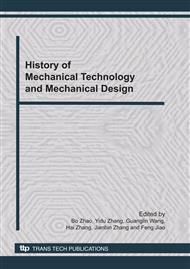p.126
p.131
p.135
p.139
p.143
p.147
p.151
p.156
p.160
Experimental Study on the Subsurface Damage in the Ultrasonic Vibration Grinding of Nano-ZrO2 Ceramics
Abstract:
Because of the hard-brittle character of ceramics, the ultrasonic vibration grinding method was used in the experiment. And the effects of ultrasonic vibration on the subsurface damage were analyzed in this paper. The experiment indicates that the frequency of 35 KHz will be more suitable for ultrasonic grinding ceramics, and under this frequency the damage layer thickness will be controlled in 11μm. The effect of vibration amplitude on the subsurface damage was also analyzed in this paper. The experiment results show that smaller amplitude will impair the efficiency of ultrasonic vibration grinding. The ultrasonic vibration mode was also an effect factor to the subsurface damage. Only the longitudinal vibration mode can improve the subsurface quality, while the bending vibration and torsion vibration will lead to the contrary results.
Info:
Periodical:
Pages:
143-146
Citation:
Online since:
November 2010
Authors:
Price:
Сopyright:
© 2011 Trans Tech Publications Ltd. All Rights Reserved
Share:
Citation:


